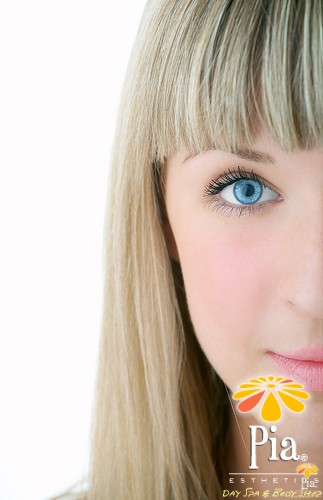Radiant Skin, it Comes From Within! What to Eat to Make Your Skin Glow.
 Who doesn't want their skin to radiate a gorgeous glow? While a consistent skin care routine is critical, the truth is so is your diet! Skin is, after all, your body's largest organ and releases toxins just as your other organs do. Highly processed foods can cause your skin a multitude of issues, including acne, dry, dull skin, aging and premature aging. Luckily, drinking plenty of water and eating fresh fruits, vegetables and foods high in antioxidants, healthy omega 3's, vitamins and minerals can illuminate your skin from within! Research suggest that diets rich in certain foods can tackle each of the three most common skin concerns; acne, dry, dull skin and premature aging. So if you're looking to combat any of these issues read on for some delicious tips!
Who doesn't want their skin to radiate a gorgeous glow? While a consistent skin care routine is critical, the truth is so is your diet! Skin is, after all, your body's largest organ and releases toxins just as your other organs do. Highly processed foods can cause your skin a multitude of issues, including acne, dry, dull skin, aging and premature aging. Luckily, drinking plenty of water and eating fresh fruits, vegetables and foods high in antioxidants, healthy omega 3's, vitamins and minerals can illuminate your skin from within! Research suggest that diets rich in certain foods can tackle each of the three most common skin concerns; acne, dry, dull skin and premature aging. So if you're looking to combat any of these issues read on for some delicious tips!
Skin Concern: Acne
Banish embarrassing breakouts by filling your plate up with the following three essential nutrients.
Vitamin A, a powerful antioxidant that thins the outer layer of your skin, the epidermis, which when too thick, creates dead cells that clog your pores. Vitamin A also dries up the oil that mixes with those dead skin cells to clog your pores causing breakouts. The recommended daily allowance (RDA) of Vitamin A is 5,000 international units (IUs). Healthy sources include sweet potatoes, green leafy vegetables such as spinach, kale and broccoli, bright red, orange and yellow fruits and vegetables such as cantaloupe, carrots and peppers as well as asparagus. Try to eat these delicious foods with healthy fats such as olive oil and avocados which have been found to increase Vitamin A absorption.
Zinc, a mineral that decreases your skin's oil production is also highly recommended, specifically 8 milligrams (mg) daily. Healthy sources include zinc fortified cereals, raw oysters, blue crab, turkey, beef sirloin, pork loin, and part-skim ricotta cheese.
Omega-3 fatty acids, the healthy, non-pore clogging essential oils that prevent your skin's cells from drying, flaking and congesting your pores. These oils also help heal acne because they have anti-inflammatory properties. While there is no RDA it's suggested to aim for 600 mg daily. Healthy sources include flaxseed, canola and soybean oil.
Skin Concern: Dry, Dull Skin
Drinking water is essential to rejuvenate dry, dull, flaking skin. It is an excellent way to keep your skin's cells hydrated. Water alone however, is not enough. The following nutrients are vital to hydrate dull, lifeless skin.
Omega-3 fatty acids: As you age your oil glands produce less oil, which increases the chance your skin will become dry and flaky. Omega-3s can help lubricate your skin to keep it looking dewy. Again, there is RDA, however it's suggested to aim for 600 mg daily, preferably from sources such as flaxseed, canola and soybean oils.
Niacin, a B vitamin thought to strengthen your skin's outer barrier, the epidermis, preventing bacteria from penetrating your skin from the outside causing redness and irritation. It not only hydrates cells but has anti-inflammatory properties. The RDA is 14 mg. Healthy sources include chicken, canned light tuna, whole wheat bread, pork chops, beef sirloin and cornmeal.
Biotin, another B vitamin thought to increase your skin's cellular turnover rate, which keeps your complexion fresh! While there is no RDA, it is suggested to aim for 30 micrograms daily. Healthy sources include eggs, avocado and salmon.
Skin Concern: Aging and Premature Aging
Aging is inevitable, preventing premature aging is ideal! Luckily, you can stall the aging process by eating lots of berries, pineapple and other delicious foods.
Vitamin A is known to increase collagen production which thickens your skin's dermis. The dermis is the layer of your skin that is below the surface, the epidermis. It contains collagen that promotes your skin's plumpness and elasticity. Vitamin A is also an antioxidant, repairing free radical damage that causes wrinkles and sagging. By consuming foods high in Vitamin A your skin will look fuller and will be much more resilient. The RDA is 5,000 IUs. Healthy sources include sweet potatoes, green leafy vegetables such as spinach, kale and broccoli, bright red, orange and yellow fruits and vegetables such as cantaloupe, carrots and peppers as well as asparagus. Again, try to combine these delicious foods with healthy fats such as olive oil and avocados which have been found to increase Vitamin A absorption.
Vitamin C, another antioxidant, essentially soaks up free radicals before they can cause damage to your skin. The RDA is 75 mg. Healthy sources include red peppers, broccoli, strawberries, papaya, pineapple, kiwi, cantaloupe and cauliflower.
Vitamin E, yet another excellent antioxidant, is thought to increase oil production in your skin which may decrease age-related dryness. The RDA is 15 mg. Healthy sources include nuts and seeds such as almonds and roasted sunflower seeds, sunflower and safflower oils, tomatoes and spinach.
Plant polyphenols, organic plant chemicals and antioxidants thought to significantly increase circulation to your skin and fight damaging free radicals. Increased circulation, or blood flow, to your skin means your skin's cells are getting more nutrients, which can be very hydrating to your skin. Additionally, these antioxidants create a natural UV ray protection, reducing redness of the skin when exposed to the sun's harmful rays. It is thought that these natural chemicals may create healthier looking skin in a shorter period of time. Healthy sources include (decaffeinated) green tea, 1-8 cups per day and just a few ounces of 70% dark cacao chocolate!
As you can see it is nearly impossible to give credit to one nutrient alone when searching for ways to improve your skin's appearance. However, when combined with a consistent skin care routine the foods above can turn acne prone, dull, dry and aging skin into clear, hydrated, radiant looking skin again! No matter your skin concern always remember to keep hydrated with water, especially during these hot summer months.

